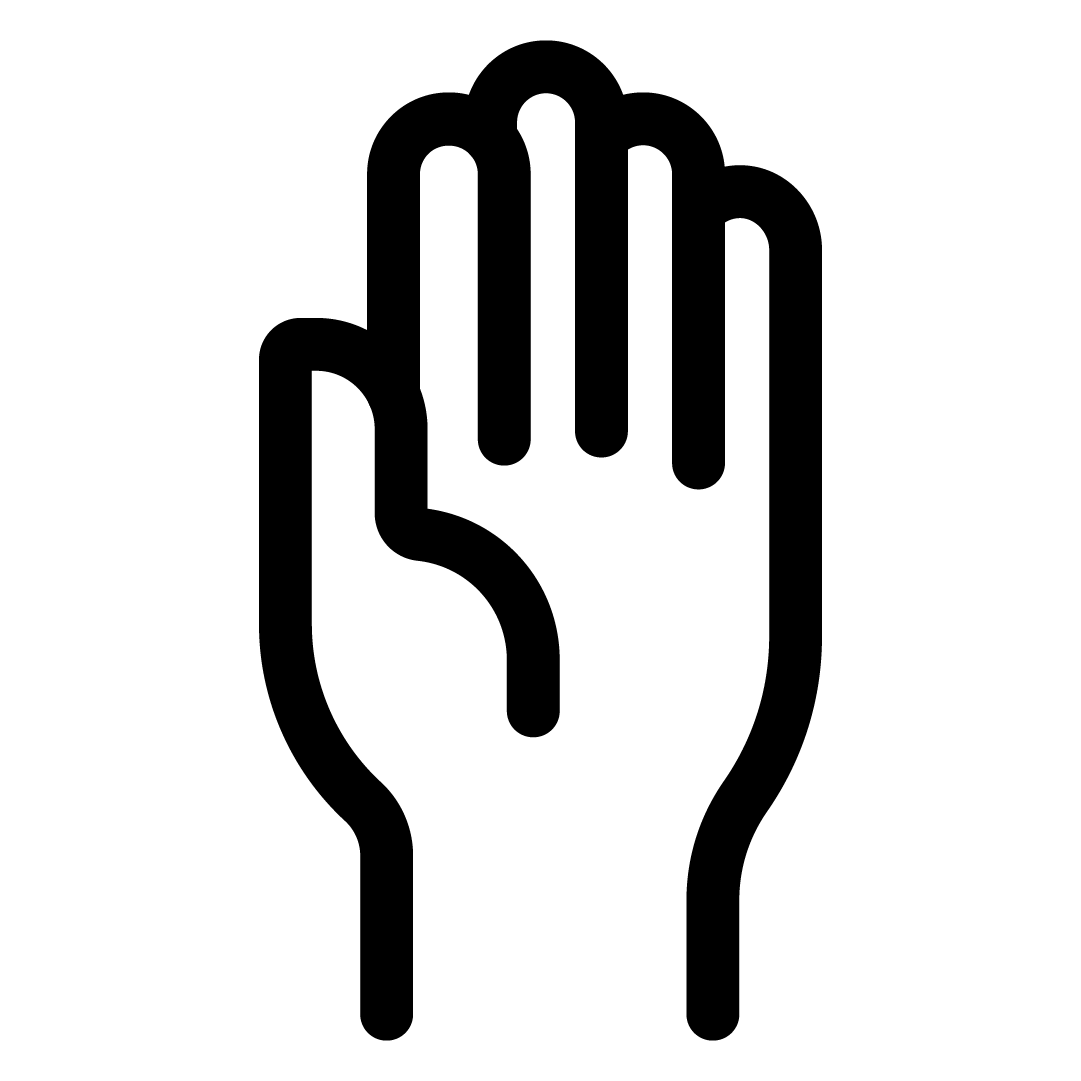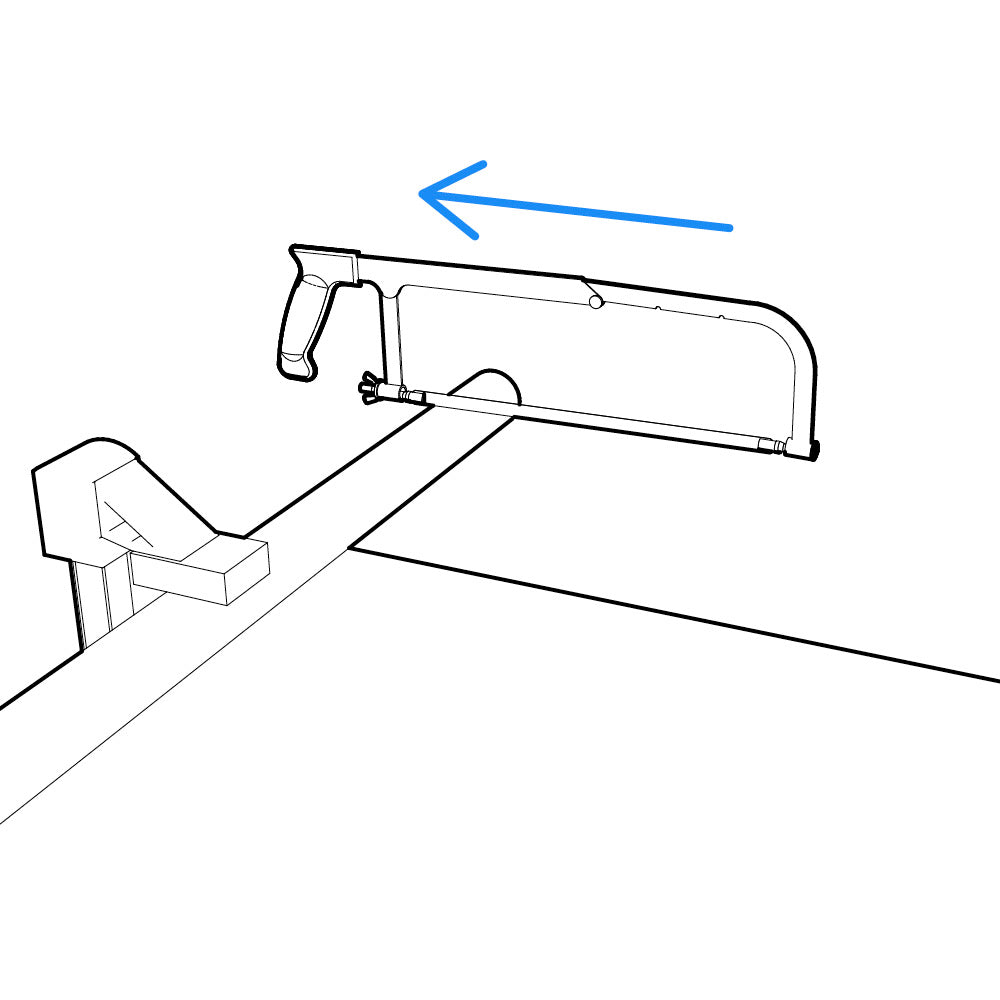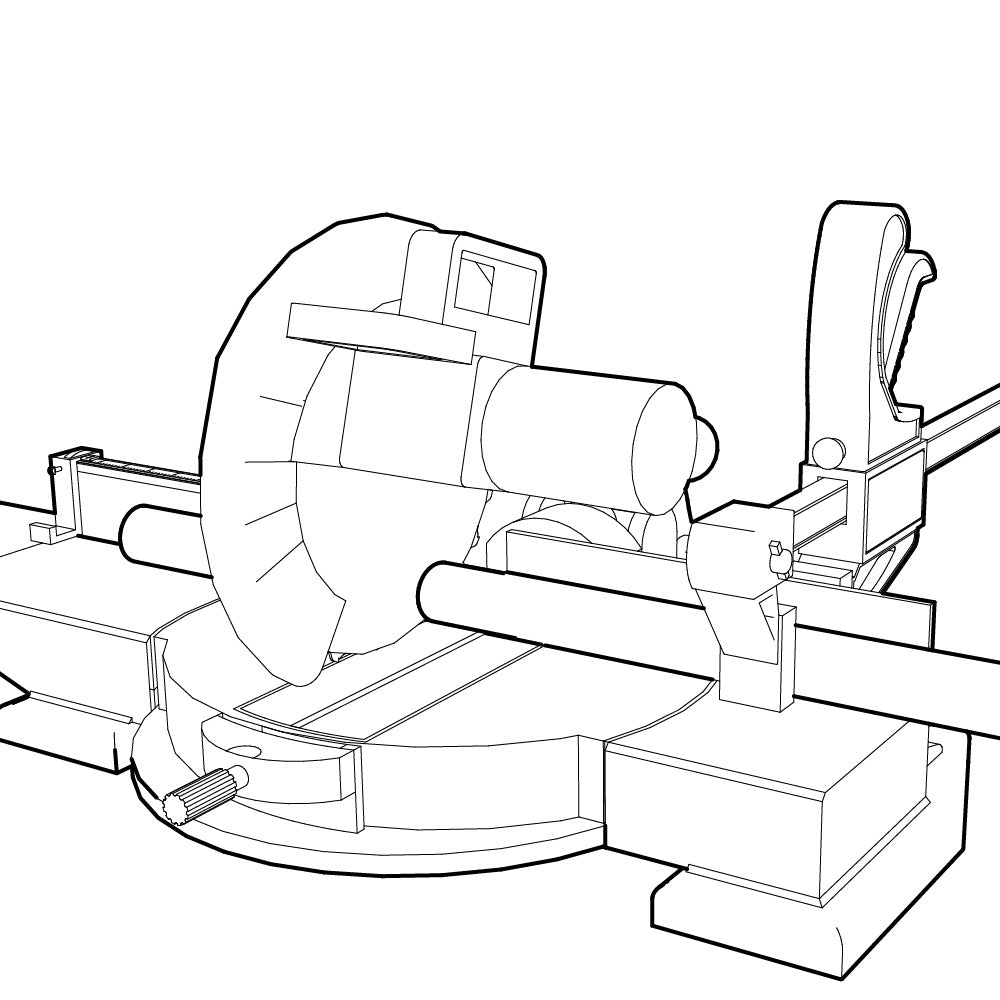Welcome!
We hope this guide is friendly and knowledgeable and provides help and solutions to people from all settings and backgrounds. Whether you're a first-time PVC builder who has never picked up any tool or a seasoned PVC enthusiast or maker who uses PVC in everyday ideas and activities, this guide should provide a general manual for cutting PVC pipe products.
What is the best way to cut PVC pipe?
We'll leave that up to you. Much of it depends upon your project size, capabilities, and, most of all, budget. Please review each PVC cutting option below and determine the ideal way to cut PVC pipe for your project or application.
If we can't answer your questions here, don't hesitate to contact our support team via our Contact Us page. We'll be glad to help.
Cutting PVC Pipe Summary
Compared to wood and metal, PVC has many methods to cut it into manageable and necessary sizes for a project. PVC cuts exceptionally easily. Other materials take a long time to cut using standard hand tools. PVC, however, does not, as it only requires you to cut the pipe's outside diameter. While wood and metal leave behind splinters or metal filaments, which can become cumbersome, PVC only leaves small traces of plastic particles, quickly cleaned up by hand without injury.
First, we'll cover all the basics, like general safety instructions. Then, we'll get into what tools are available to cut PVC pipe, and then we'll show examples of how to use each tool or method to cut PVC pipe. Finally, we'll discuss additional techniques for finishing up the cutting PVC pipe process and cleaning up and what tools you should not use.
Safety First

Important!
Every method to cut PVC pipe involves tools that use a cutting blade. Each of these tools can cause serious harm to an individual if not used properly. Read, understand, and follow all the safety rules for your hand or power tools. Failure to do so could cause bodily harm.

Hands
Always be aware of where your hands are when cutting PVC pipe with any tool, whether manual or power. Always clamp, and never hold PVC pipe when cutting with a sa

Eyes
Wear safety glasses, goggles, or other eye protection when cutting PVC pipe, as pipe fragments can be ejected from the cut area.

Lungs
Wear a mask or respirator. When cut, PVC pipe can emit small particles that irritate the lungs or throat.
PVC Pipe Cutting Tools
PVC pipe is one of the most versatile structural building materials available, but you still need a method to reduce it to the correct size. There are many ways (including many types of tools/cutter brands) to cut PVC, but we've provided a few methods and tools, shown below, to cut PVC pipe quickly and safely.

Hacksaw / Backsaw
The hacksaw or back saw are the most common methods for cutting lengths of PVC pipe, as most individuals already have one in their toolbox or garage. Hacksaws and back saws work well but are somewhat time-consuming and can require additional work to de-burr the edges of the cut PVC pipe. A hacksaw is ideal if you only need to cut one or several pieces of pipe.

Tubing Cutter
The scissor-style PVC pipe cutter is inexpensive and easy to use. They are, however, limited in their cutting capability and can add stress to the hands as they are ideal for smaller tubing. It would be best if you only considered using scissor-style plastic pipe cutters for 1" or smaller PVC pipe sizes.

Ratcheting PVC Pipe Cutter
The ratcheting-style PVC pipe cutter is slightly more expensive than the scissor-style cutter; however, you can do larger diameters of PVC pipe with less effort (up to 2" pipe for some) with these PVC cutters. Be aware that, over time, they can cause stress on the hands and forearm when performing frequent cuts.

Power Miter Saw
A power miter saw is ideal for cutting large quantities of PVC pipe. However, they are expensive. If you own or have access to one and know how to use it safely, you can use the existing wood blade to cut PVC pipe without buying a special blade. Be sure to read and understand the instructions included with the miter saw.
Cutting PVC Pipe with a Hacksaw
⚠️ CAUTION: Be sure to clamp all PVC pipe with a vise, C-clamps, or quick-release clamps. Do not attempt to hold the pipe steady with your hands, as injury could result.
PVC Hacksaw Cutting Steps
Measure & Mark the Cut
Use a tape measure to determine the exact point where you want to cut the PVC pipe. Then use a marking tool such as a pencil and make a clear and visible mark on the pipe where you will make the cut.

Clamp the PVC Pipe
Clamp the pipe to a solid surface, such as a table. If using a miter box, be sure the box has been secured to a table. You can use a vice, C-clamps, or quick-release clamps to secure the pipe to the table or the miter box.

Notch the Cut
Place the rear of the hacksaw blade on the cut mark, then draw it backward to create a notch in the PVC pipe. Repeat until there is a defined notch in the pipe. This notch will guide all subsequent movements and make it easy to cut the pipe.

Start Cutting
Begin cutting slowly with a back-and-forth motion, ensuring the cut is straight as the hacksaw cuts further into the pipe. You can then speed up the sawing motion but let the saw do the cutting.

Slow Down to Complete the Cut
When you get to the bottom of the pipe, slow down on the sawing motion and complete the cut smoothly and gently at an angle to avoid a 'blowout' of the edge of the pipe. Repeat until completely cut.






Cutting PVC Pipe with a Tubing Cutter
⚠️ CAUTION: Take breaks between frequent cutting to avoid hand fatigue. Only use this method and tool on 1/2" and 3/4" size PVC pipes.
PVC Tubing Cutter Steps
Measure & Mark the Cut
Use a tape measure to determine the exact point where you want to cut the PVC pipe. Then use a marking tool such as a pencil and make a clear and visible mark on the pipe where you will make the cut.

Place the Blade on the Mark
Hold the pipe in one hand with the mark you made facing up, and place the pipe inside the pipe cutter mechanism. Ensure the cutter's blade is on the cut mark you made.

Rotate the Pipe
Grasp the handle with pressure, then slowly rotate the pipe cutter around the pipe, ensuring that you remain straight. If the pipe cutter begins to make a 'spiral' and goes off to the left or right, restart the cut and attempt to keep it straight (usually caused by gripping too hard).

Continue to Cut the Pipe
Once you have made one pass around the entire pipe, apply additional pressure and repeat the rotations around the pipe until you have cut through the pipe completely.





Cutting PVC Pipe with a Ratcheting Pipe Cutter
⚠️ CAUTION: To prevent strain on your hands and wrists from repetitive cutting, it's important to take frequent breaks. Giving your hands a rest and stretching them during breaks can help prevent fatigue and discomfort.
Ratchet-Style Pipe Cutter Steps
Measure & Mark the Cut
Use a tape measure to determine the exact point where you want to cut the PVC pipe. Then use a marking tool such as a pencil and make a clear and visible mark on the pipe where you will make the cut.

Open the Cutter
As you open the handles of the ratchet-style pipe cutter, the blade will also lift. Open the pipe cutter handles all the way so that you can fit your pipe in between the blade and the jaw of the pipe cutter.

Place the Pipe in the Cutter
Hold the pipe in one hand with the mark you made facing up, and slide the pipe between the blade and lower jaw. Place the blade of the pipe cutter on the mark and squeeze the handles until they come into contact.

Begin Ratcheting into the Pipe
Grasp the handle with pressure until the blade meets the mark, then release the handle and repeat to use the ratcheting action. Continue ratcheting down onto the pipe until you are entirely through it, and it separates into two segments.





Cutting PVC Pipe with a Power Miter Saw
⚠️ CAUTION: If improperly used, power miter saws can be extremely dangerous and cause fatal injuries. To ensure your safety, it is imperative that you carefully read and understand the instructions that come with your saw before attempting to use it. Never take shortcuts or operate the tool without taking all necessary safety precautions.
Power Miter Saw Steps
Measure & Mark the Cut
Use a tape measure to determine the exact point where you want to cut the PVC pipe. Then use a marking tool such as a pencil and make a clear and visible mark on the pipe where you will make the cut.

Position the Pipe
Position the PVC pipe so that the previously made cut mark is precisely in line with the corresponding mark on the miter saw throat plate.

Secure the Pipe
Secure the pipe to the miter saw table with clamps to the miter saw fence. Never use your hands. A pipe clamp with a curved face may be more practical to hold the pipe in place properly.

Cut the Pipe
Pull the switch trigger and slowly bring the miter saw arm down into and through the pipe, then release the switch trigger. Allow the blade to stop spinning entirely before lifting the blade. Once stopped, lift the saw back up and remove the PVC segments.





Additional Cutting Tips
Deburring PVC Pipe
When cutting PVC pipes with a hand saw, such as a hacksaw, the back-and-forth motion of the saw can create small fragments at the end of the inside of the pipe, known as burrs. These burrs can be annoying, scratch items, and make a mess.
There are three ways to deburr a PVC pipe to clear it of all burrs
Use a Deburring Tool
- Insert the deburring tool into the end of the pipe.
- Manually turn the deburring tool several times while inside the pipe.
- Remove the deburring tool and inspect the inside of the pipe. The burrs should be gone.
Use a Blunt Tool or Knife
- Insert a butter knife or other blunt object into the end of the pipe.
- Carefully run the knife along the inside edge of the pipe, knocking off the burrs.
- Carefully run the knife along the inside edge of the pipe, knocking off the burrs.
Use Sandpaper
- Wrap sandpaper around a dowel or other cylindrical object.
- Insert the sandpaper-wrapped dowel into the end of the pipe.
- Run the sandpaper along the pipe's inner diameter, knocking the burrs loose.
PVC Cutting Methods to Avoid
When cutting PVC pipes, using the right tools and methods is essential. Here are some methods of cutting PVC pipe that you should avoid:
Do not use power tools where you move the pipe into the blade.
This method is frowned upon because the curvature of the PVC pipe makes it difficult to maintain a secure hold on the pipe. The saw blade may also contact the pipe at different points, causing it to bounce off and injure you.
Do not use table saws or band saws.
These tools can cause kickback when the saw blade comes into contact with the pipe, shooting the pipe back toward the operator. This PVC cutting method can be dangerous, especially when cutting PVC pipe, which is brittle and can shatter.
Do not use wood saws.
Wood saws have large teeth designed for cutting wood. They are not as sharp as hacksaw blades, and they can cause the PVC pipe to chip or crack.
FORMUFIT Support
Some description
Contact Us
If you want to contact us with questions or suggestions, please reach out to us via our Contact Us page. We'll be glad to help with any questions related to cutting PVC pipe that you might have. We've got a lot more guides where this one came from, which are available in our FORMUFIT Guides section.
Legal Disclaimer
The information contained in this manual is provided for general informational purposes only. FORMUFIT LC assumes no responsibility and disclaims all liability for any damage, loss, or injury arising from the use of, or reliance on, this information. This includes, but is not limited to, loss of profits, business interruption, loss of opportunity, indirect, incidental, special, or consequential damages, as well as personal injury or loss of life.

